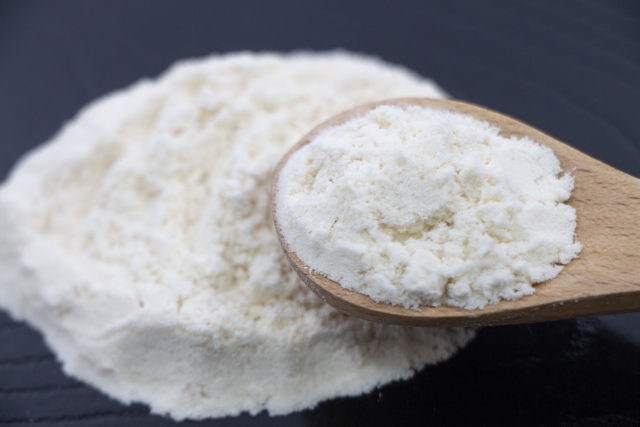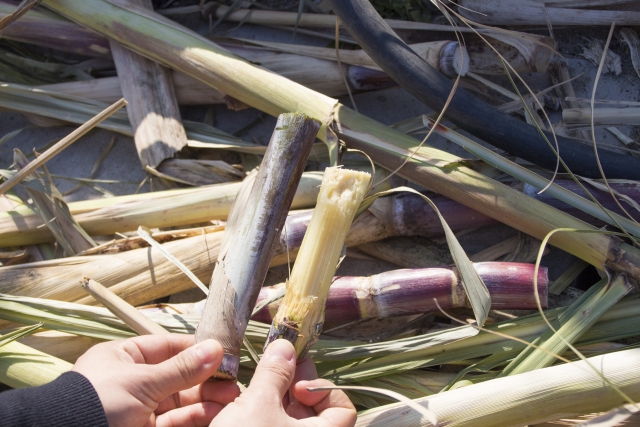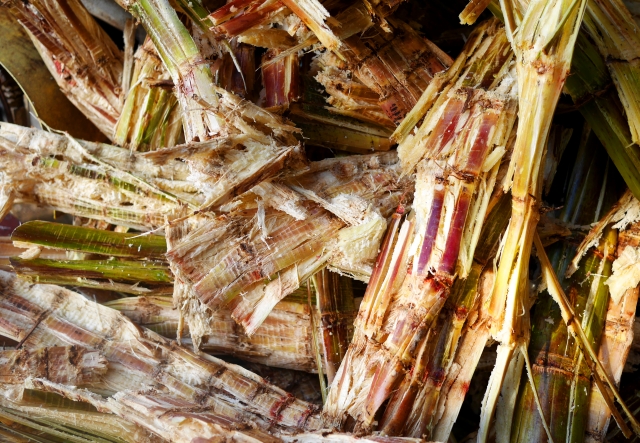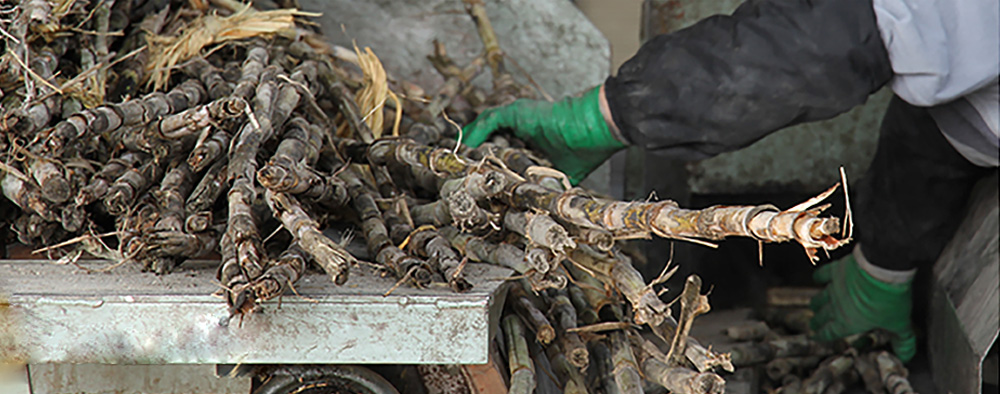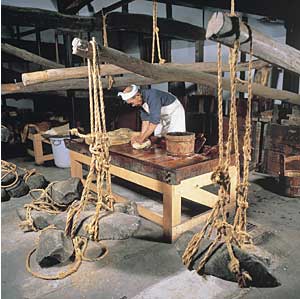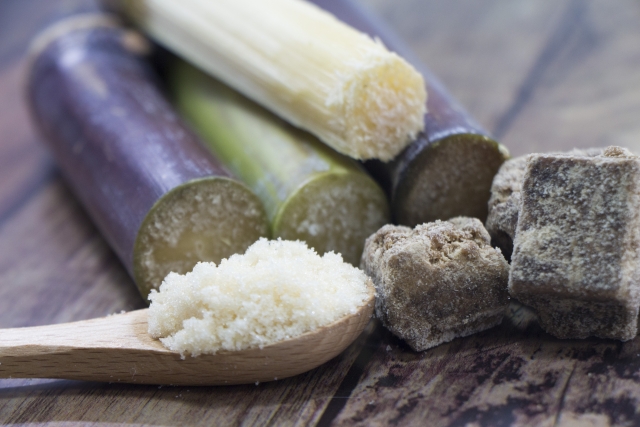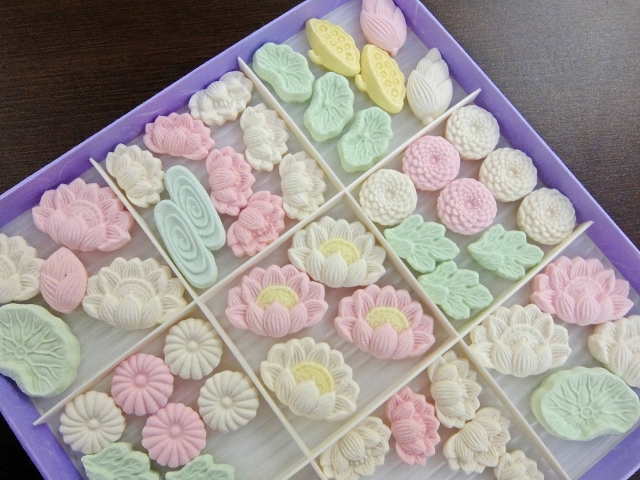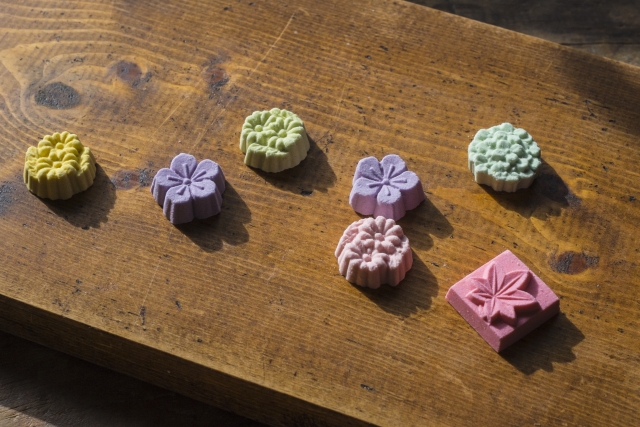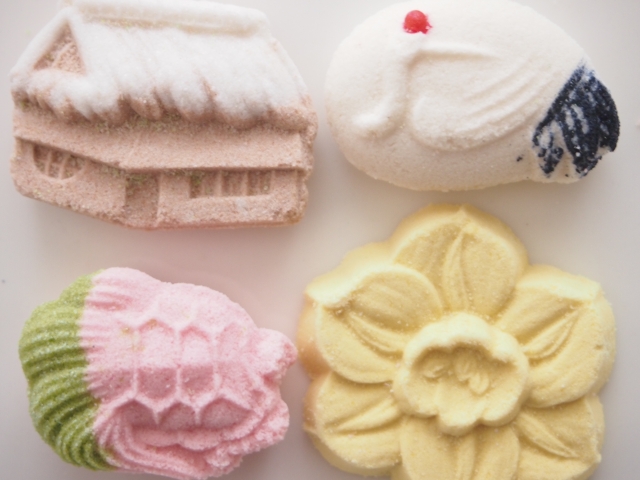

Tokushima's Sweet Tooth
The Shikoku region is well known for its fruit crops. From citrus fruits like yuzu and mandarin oranges, to others like persimmons and peaches, Shikoku produces a large number of sweet fruits depending on the season. In addition to fruits, did you know that the Shikoku region also produces sugarcane, which is used to make a luxurious, fine-grained sugar known as wasanbon (和三盆)? The first step in the sugar manufacturing process is to extract the juice from the sugarcane. In the past, sugarcane was squeezed using stone rollers that were turned by cows. Today, this process is fully-automated thanks to the development of new machinery. The freshly extracted sugarcane juice contains a lot of bitter lye, and so the next step involves removing the bitter foam and boiling the juice to extract the lye. Though it is a relatively quick process (about 30 minutes), it requires a lot attention from the worker. How well one can extract the lye determines the quality of the end product. Next, mud and sand is removed and the juice is boiled once again. Once it reaches the desired consistency, it is then cooled. Usually, factories will appoint their most senior worker to oversee this step; instead of tools like thermometers, these workers use their experience and instincts to determine when the boiling juice should be removed from the heat. After being boiled, the juice is moved into a separate ceramic pot where it is cooled slowly. It will eventually crystallise into a half-solid state that is known as coarse sugar. Thus begins the refinement process. The first refinement is done to draw syrup out of the coarse sugar. It is covered with cloth and placed in a box. A heavy stone weight is placed on top, and after a week, more syrup will be extracted, turning the coarse sugar whiter. It is then mixed with water and kneaded by hand, before being pressed again. In the past, this kneading process was done three times, hence the name ‘thrice-refined’. These days, however, this step is repeated four to five more times in order to obtain a whiter, smoother sugar. This process also requires a lot of time and expertise. Finally, the sugar is sifted and dried in a shady, well-ventilated place. The end product is wasanbon! It is a special product valued for its unique flavour, with more containing more umami than other types of sugar. As previously mentioned, wasanbon is an important ingredient for traditional Japanese sweets. Most of the wasanbon produced is made specifically for reputable Japanese sweet makers, which makes the remaining wasanbon that is sold in the market a high demand product! It is indispensable in higashi like rakugan, as well as mizu-yokan. Recently, the uses of wasanbon has widened considerably. It is used in Western-style sweets, and also in savoury dishes like soba and sushi! Wasanbon can be eaten in chunks as is, just like a piece of candy. The mild sweetness of it goes well with bitter green tea. However, it can be used as a sweetener and mixed into drinks like coffee, tea, and even cocktails! |
|
Resources
|
"A Touch Of Refinement: The Delicate Sweetness Of Japan’S “Wasanbon” Sugar". 2015. Nippon.Com. https://www.nippon.com/en/views/b04403/. Geeraert, Amélie. 2020. "What Is Wasanbon, The Traditional Japanese Sugar? - Kokoro Media". Kokoro Media. https://kokoro-jp.com/culture/536/. "Wasanbon: Tokushima’s Native Sugar That Has Chefs Smacking Their Lips | English | イーストとくしま観光推進機構". 2021. イーストとくしま観光推進機構. https://www.east-tokushima.jp/en/explore/detail.php?id=108. "What Is "Awa Wasanbon Toh"?". 2022. Okada Sugar Manufacture. Accessed January 18. http://www.wasanbon.co.jp/english/wasanbon/index.html. |
|
Japan Creative Centre 4 Nassim Road, Singapore 258372 +65 6737 0434 / jcc@sn.mofa.go.jp https://www.sg.emb-japan.go.jp/JCC/ Nearest parking at Orchard Hotel & Delphi Orchard |
 |
